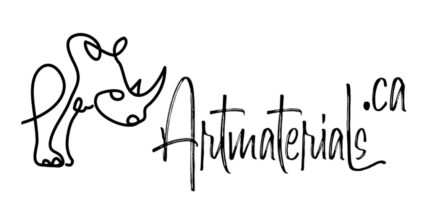- You have no items in your shopping cart
- Continue Shopping

That’s very important to know what you’re buying and some information about your paints is available on labels:
- paint name
- grade
- pigment used
- binder
- lightfastness
- transparency
- safety note
Paint name
Although there are many common names for paints we used to see around, there is no standard on how to name a colour. The spectrum contains millions of colours and all they can be named differently.
Some manufacturers use traditional and most common names, such as cadmium red medium, cobalt blue, ultramarine blue etc. These names stand for pigments used and it’s easy to understand what is inside the tube.
Some names can be unique due to marketing goals or multiple pigment used. For example, Australian Grey or Australian Leaf Light by Art Spectrum or Portland Grays by Gamblin or Raw Umber Leningrad by Nevskaya Palitra.
Also, the same pigment treated differently can provide a wide verity of hues, shades and transparency level. One of champions in that is PY42 Iron Oxide Yellow ,which has about 100 different names.
Paint grade
Paint grade is also a very questionable category as there is no standards of marking paints student or artist grade. For RUSART, we split paints into 4 categories: children, student, artist and professional. Most manufactures offer 2 categories: student and artist grade.
The main difference in paint grading is pigment load, quality of pigments used as well as fillers and mediums added.
- Children grade. We have a special article about art supplies for children. Generally speaking, the main criterium here is safety. Pigments used here are non-toxic and must have certain certification and labelling. Normally we talk about watercolours here and they contain a lot of dextrin (sugar) and starch instead of more expensive components.
- Student grade. Safety is not the main criteria here. Usually these paints lower budget for everyday use and practice. Pigment load normally lays between 3 and 20%. All the rest are fillers and binders. Cobalts and cadmiums are normally hues here, which means not real. Although professional artists prefer to use higher quality brands, student paints are still very helpful for underpainting and sketching due to there lower price.
- Artist and professional grade. That’s the main target for professional artists. Binders and pigment load vary, but most paints still contain fillers. If earlier information on pigment load was available in safety data sheets, for now it’s hard to find real numbers. According to our experience, pigment load in artist grade paints is between 15-70%. We will talk about pigment load in a special article.
Pigment used
One of the most important information for colour choice. Paint tube will indicate colour index (CI) that stands for chemical characteristics of pigment used. CI will start with N or P. ’N’ stands for ‘Natural’ and ‘P’ stands for ‘Pigment’. Then a colour identification comes:
- Y – Yellow
- W – White
- B – Blue
- Br – Brown
- Bl – Black
- R – Red
- V – violet
- G – green
- O – Orange
Index doesn’t show exactly the colour or a colour wheel. For example, PR101 is rather red-brown than bright red or PY42 is ochre but still refers to yellow colours.
Then index itself comes. It’s just a number. You can check pigment index names and their technical characteristics here >>
Transparency
This normally has 3 categories: transparent, semi-transparent and opaque. Usually manufacturers include a symbol – a square. If the square is empty the paint is transparent, if it’s half-filled – semitransparent and if the square is black the paint refers to opaque category.
Lightfastness
Nowadays that term is getting replaced with weather resistance, meaning how much paint will change its colours with time under different conditions: exposure to light, UV, moisture, temperature etc.
Safety note
Working with some pigments may involve some risks. For example, cadmiums and cobalts are known to contribute into cancer development. Emerald green (PG21) is extremely toxic and poisonous. Once used as a rat poison and to preserve wood. It was called a trendy color that killed many in victorian society.
Some other pigments, such as zinc white, can be harmful for environment and are not supposed to be disposed into water or soil. Paints intended for sale in the USA should have safety warning for such pigments. In Canada paints may or may not contain such warnings.
And some other things that you should keep in mind:
- Not all ingredients used in paints will be on the label
- Term ‘acrylic emulsion’ or ‘acrylic dispersion’ combines many chemical ingredients, including ammonia and solvents and these ingredients will not be listed separately
- Oil paints may contain lead or barium sulphate fillers that will not be shown on the labels either
- Manufacturing date is normally absent on paint labels
As you can see, labels can give a lot of information on what’s inside. However, some very important things can be still omitted.




